PR is one of the biggest (and most complicated) ecosystems in all of digital marketing. Not only does it involve crafting a compelling message and story, captivating an audience, and getting them to convert on others' platforms, but you also have to navigate how to send that message out.
But none of that matters if you don't know how to send a press release.
So how do you tackle it? We'll walk through the eight essential steps to ensure your press release reaches the right people and lands with a bang.
An Introduction to Press Releases
You ever wondered how news outlets always seem to know what's going on with hundreds of different companies and brands? Well, there's a good chance they don't. Those companies just have great PR services behind them that crafted an effective press release.
A press release is a document that announces something newsworthy. It could be numerous things:
- The debut of a new product
- The launch of a new website
- The results of a study you recently published
- A new service that your company rolled out
You can announce anything new, exciting, or noteworthy with a press release, so long as it highlights something game-changing, innovative, or inspiring about your company or its products or services.
And lots of companies are doing it — 1 in 4 businesses puts out more than 10 press releases every year, and 68% of companies say they've increased brand awareness after incorporating press releases in their PR campaigns.
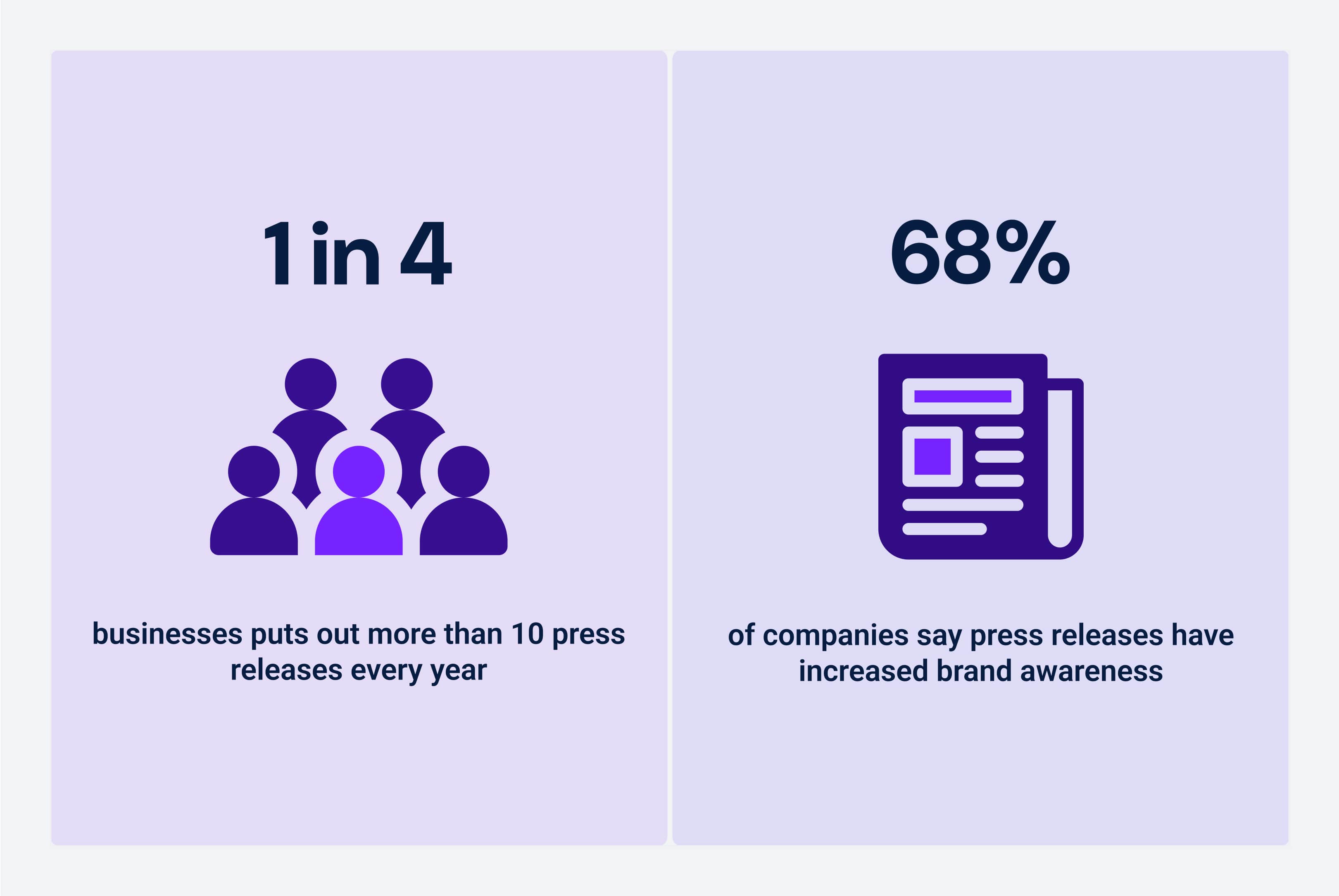
But putting together a press release and sending it out into the ether isn't enough. You need to send it to the right people to make the biggest impact. And you need to do it strategically. A press release that isn't targeted enough, has bad content that doesn't represent your brand (or doesn't align with the overall message you're going for) won't get you anywhere.
Realistic Expectations for Sending a Press Release
If you're hoping to score some media coverage for your latest product launch or company event, you'll need to put together a press release. But before you start cranking out paragraphs of text, it's important to have realistic expectations about what a press release can actually achieve.
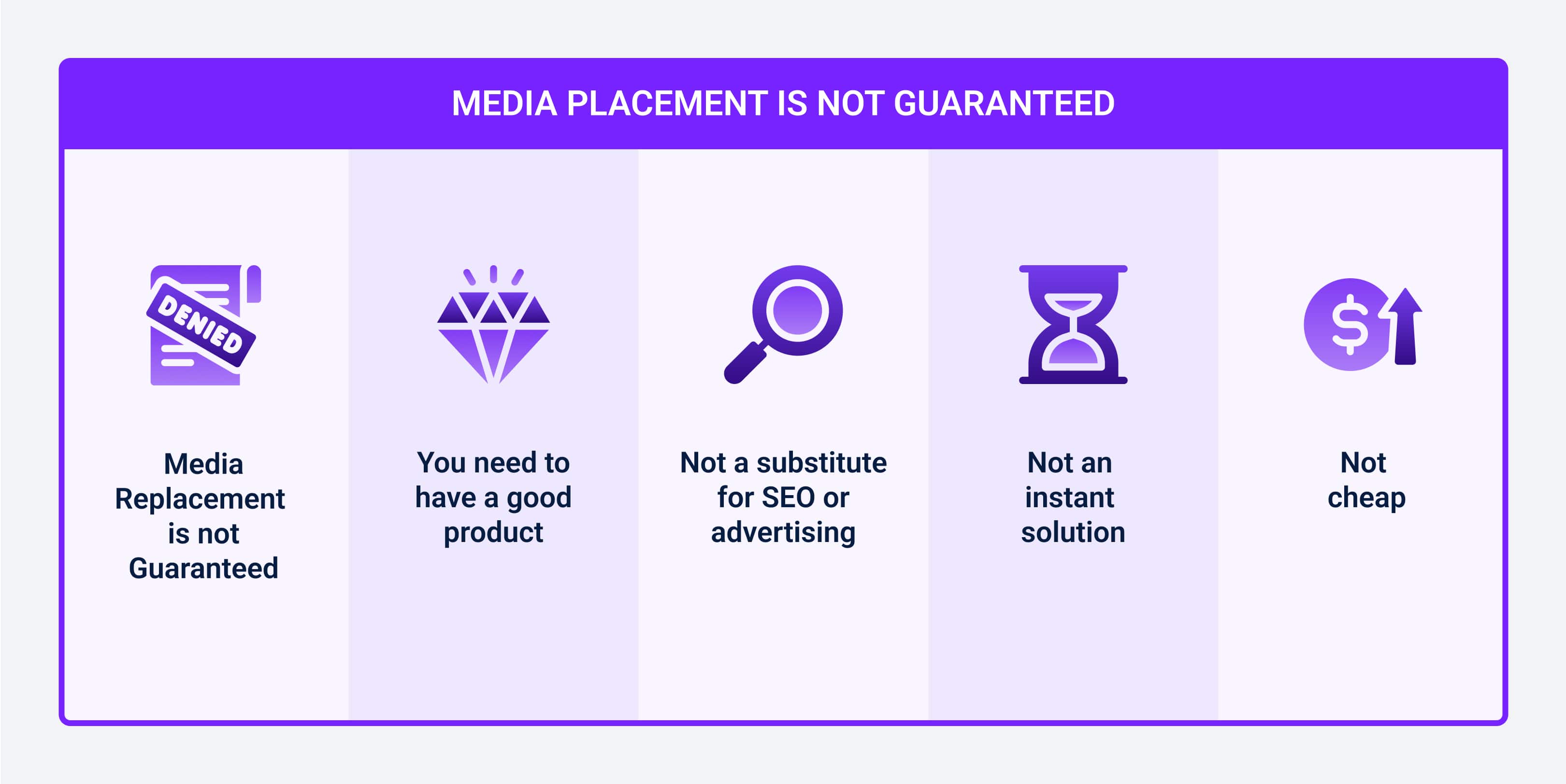
A press release is NOT a guarantee that your story will be picked up by the media.
While a well-written and newsworthy press release can increase the chances of getting media attention, there are no guarantees.
For long-term business success, you need to have a good product.
Above all, a good product will get you noticed—not how good your press release is. And no matter how good your PR team is, a bad product won't result in long-term customers or revenue for your business.
Your press release is not a substitute for advertising.
Its main purpose isn't to sell anything, but rather to inform and raise awareness and interest. It should be written in a way that informs and entices the reader to learn more about you, your story, and how it might be relevant to them.
Press releases aren't instant solutions.
Like many things, sending a press release involves time and effort. You should expect to spend some time creating the content, distributing it, and following up with any contacts you make to keep them engaged.
PR isn't a substitute for SEO.
Although press releases can help boost your search engine rankings, they're not a replacement for SEO because they usually don't directly improve how well your website ranks in search engine results.
Getting your blog written and published on a high-value site isn't cheap.
And don't try to circumvent press release costs, either. A good PR article will cost around $1,000 on its own, and that's before paying any money to an agency, distribution service, or placement site.
How to Send a Press Release In 8 Crucial Steps
Now that you know what to realistically expect from a press release, let's look at how you can send one out in eight steps.
Determine the type of press release you want to post.
Before doing anything, you need to determine what type of article is best for your strategy. Getting this out of the way first ensures that you’ll craft the optimal press release and improve your chances of getting it placed.
There are several different press release types, and each one presents a unique opportunity to get your company featured.
Thought leadership articles are great if your goal is to establish your company or its CXO as an authoritative voice in your space, then you'll want to write an article that showcases how your products or services are solving industry issues. In this Forbes article, a venture capitalist discusses leveraging AI to enhance networking strategies within the investment community.
Industry podcasts are your best bet for reaching a large audience about an innovative new product or service is to get featured on a popular industry podcast. PUMA recently introduced a new podcast series, "Go Wild," highlighting stories from brand ambassadors who have redefined their respective fields. But as a smaller brand, you could just appear on one.
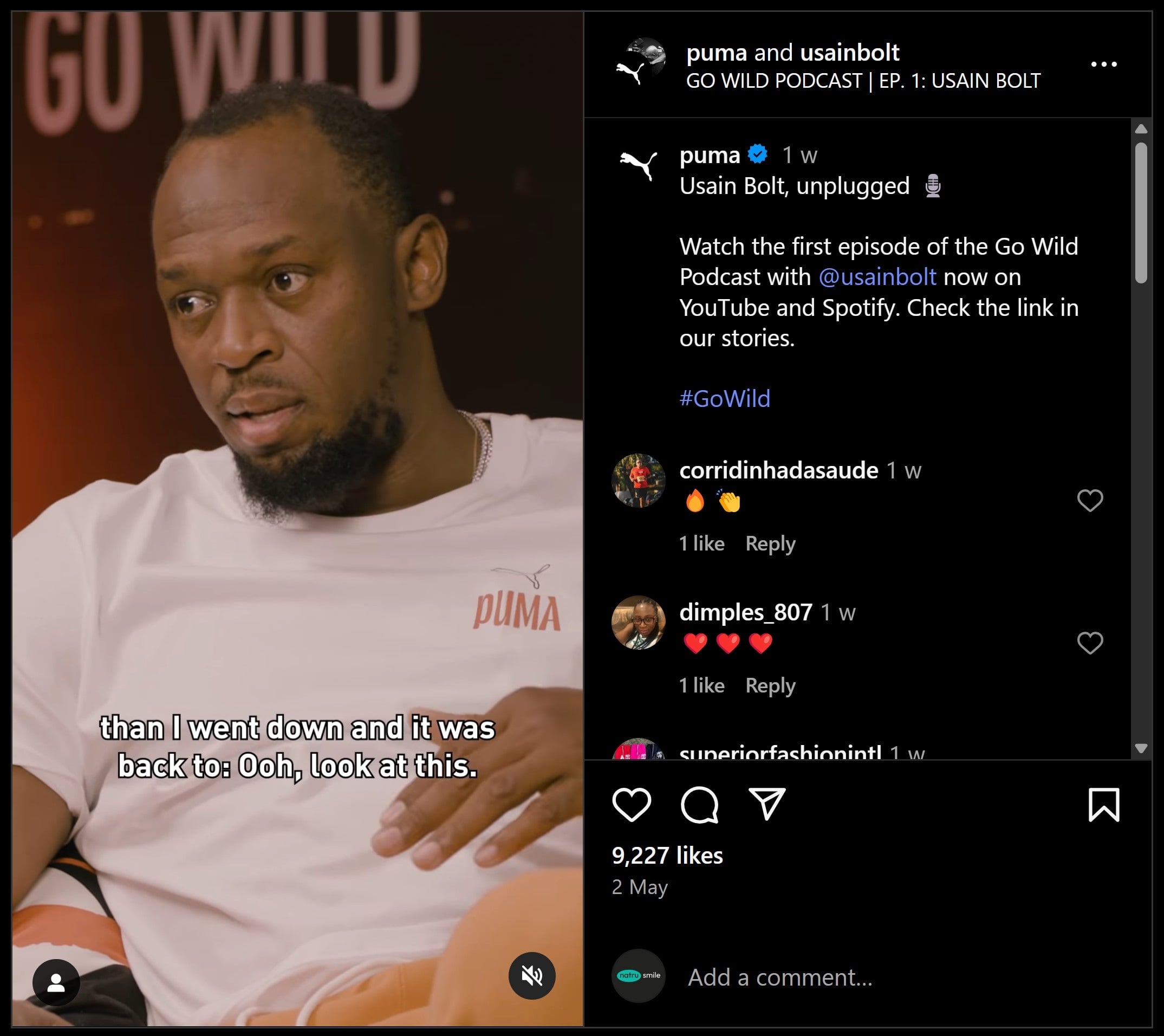
Online newsletters work well when you want to reach a niche, targeted audience that's highly engaged. Morning Brew, a newsletter with more than 4 million subscribers, sends a daily email covering business news and other industry insights. And United used it to announce their switch to free WiFi on ~80% of their domestic planes.
Influencer social media is a solid choice if your goal is to reach a large audience and generate buzz for your brand. And you can scale it as big as you want — at any given time, Manscaped is running campaigns with hundreds of influencers, so their product is always top-of-mind (in the best way possible).
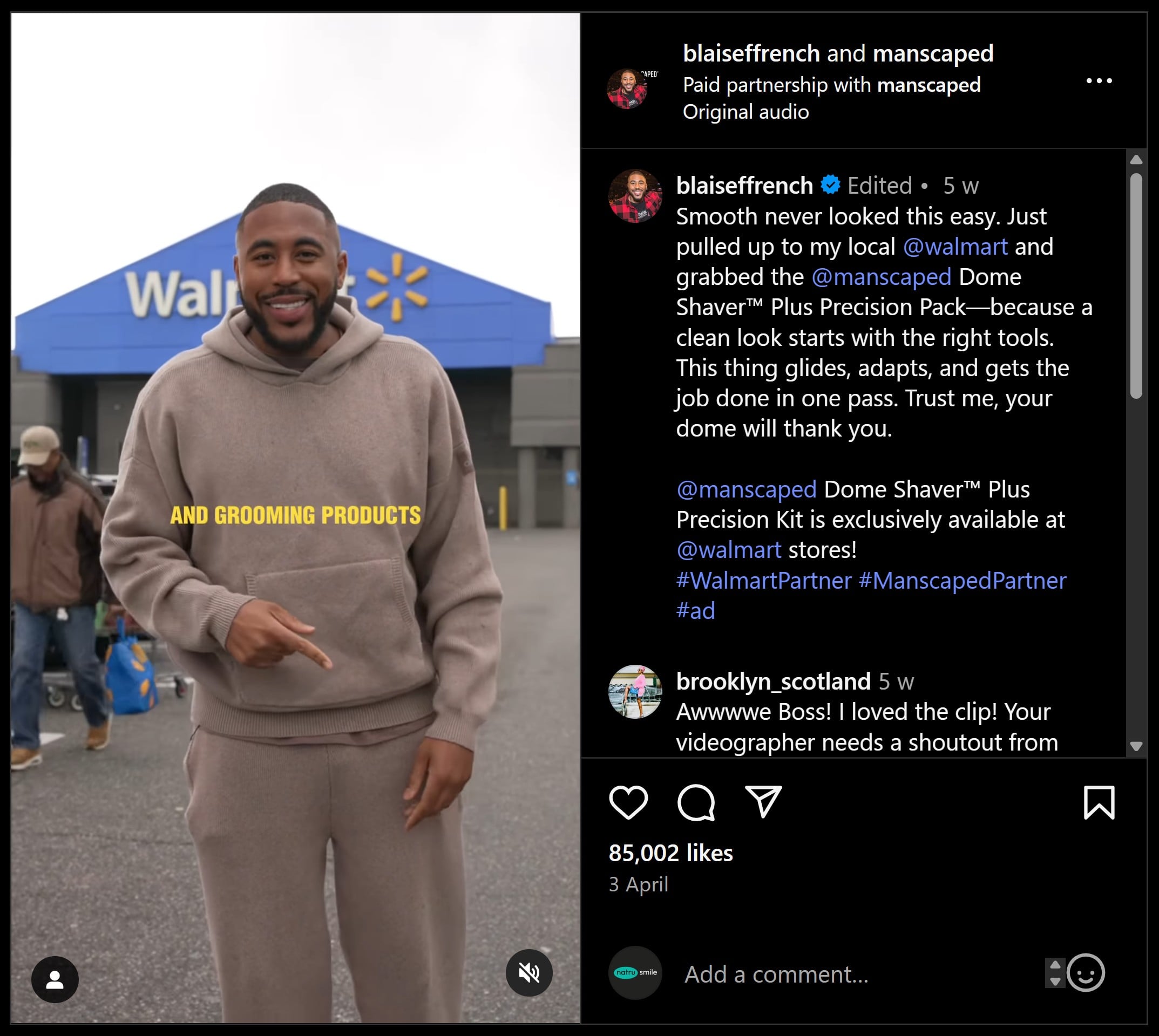
News sites like Forbes, MarketWatch, TechCrunch, and VentureBeat are great places to get your news out there and raise awareness for your brand or product. Torch Sensors just announced its ultra-early wildfire detection system via a press release, garnering coverage in outlets like BusinessWire and TechCrunch.
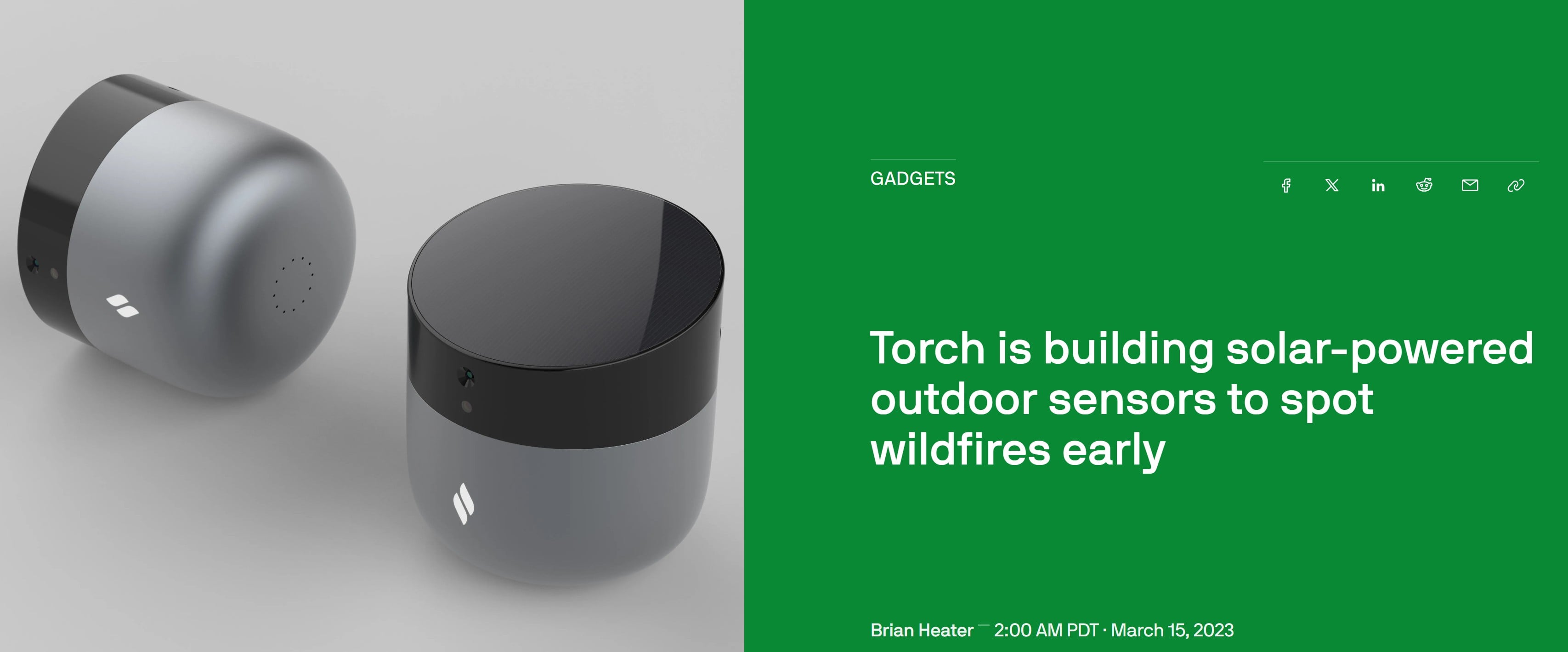
Write an outstanding press release article.
You can use a million different PR tools for outreach, distribution, and optimizing how the news appears online, but if you don't have good content to start with, those other parts of a press release won't matter.
When you're pitching a press release to blogs, you have to remember that they are major businesses with huge audiences. They'll want stories that are worth their time and effort to put in front of those readers. That means your press release should be interesting, informative, and well-written.
Our tips for crafting a well-written press release:
- Know your audience. Research the blog or publication you’re targeting to ensure your story fits their readership.
- Write with brevity and clarity. Keep it concise and avoid convoluted language that can be misinterpreted.
- Focus on benefits. Show how your product or service helps people, rather than just listing features.
- Craft a compelling message. Use colorful language that paints a picture for the reader. Instead of using words like "amazing" or "great," use descriptive words that explain how the product or service can help people.
- Don't skimp on copywriting costs. You might be tempted to hire a cheap writer on Upwork or Fiverr. If you do this, we promise you'll regret it. Professional press release writers are (a) familiar with the format and (b) can write in a way that resonates with the recipients.
WE ARE A FULL-SERVICE PR AGENCY
Get featured in top-tier media, build credibility fast, and attract new business with proven PR strategies that actually deliver results.
Let's talk - Schedule a call with our expert team today to see how we can help!
Find relevant journalists and their contact information.
If you work with a PR agency, they'll usually have a list of relevant journalists to target. But you can also do your own research in several ways (and we recommend that you do, regardless of whether you hire an agency or not).
Find journalists on social media.
One of the easiest ways to find journalists is to search for them on social media. Start with LinkedIn and Twitter, and make sure you use the right terms when searching.
In this simple LinkedIn search example above, you can see a few results for the search term "journalist." You can get more specific, but this example should give you a good idea of how to do it.
Using Sales Navigator, you can refine the search by industry, title, location, and more.
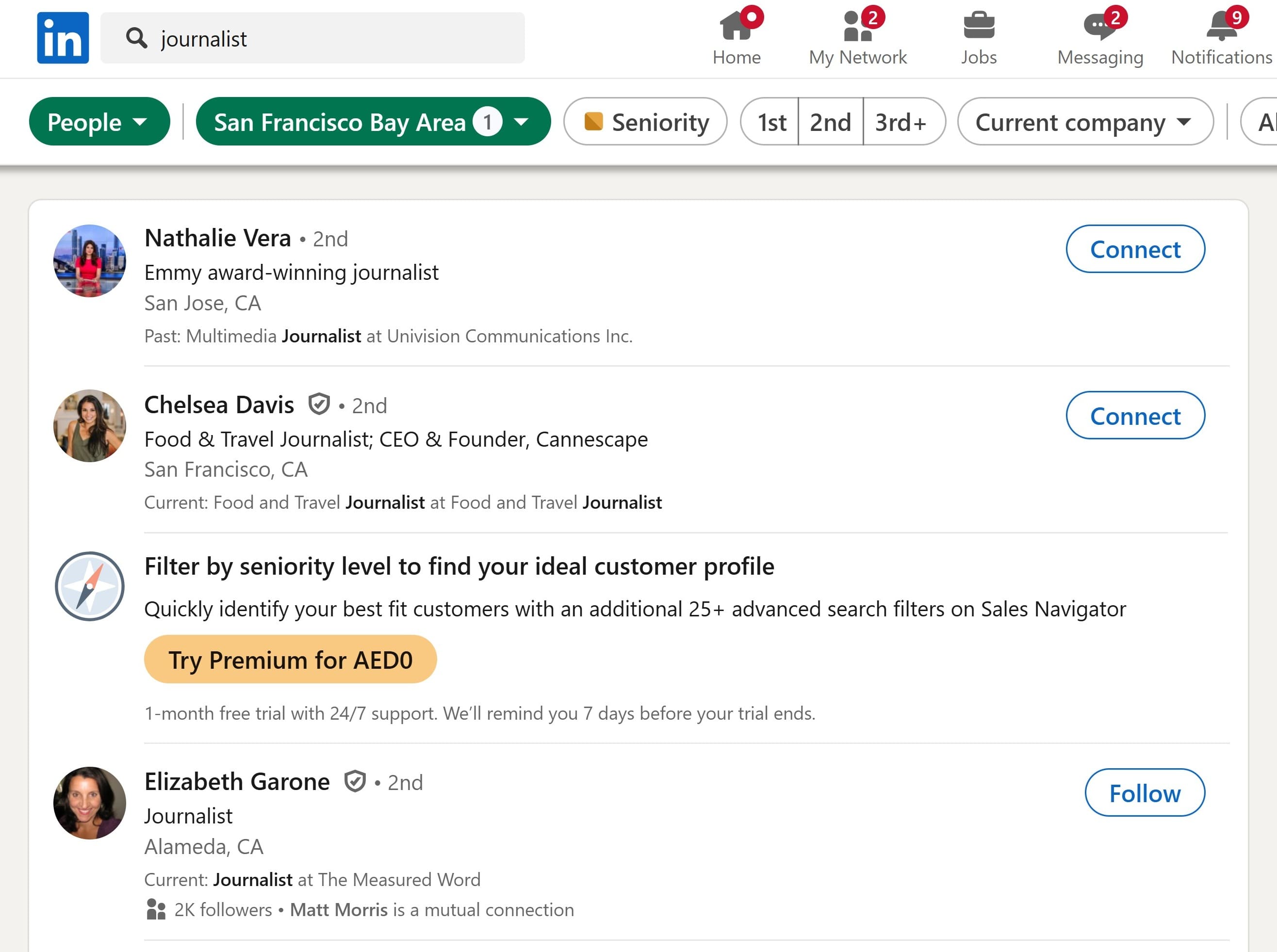
You can also use X's (Twitter) advanced search to find potential journalists based on your predetermined criteria. Many of your target contacts will likely have a Twitter handle listed on their LinkedIn profiles.
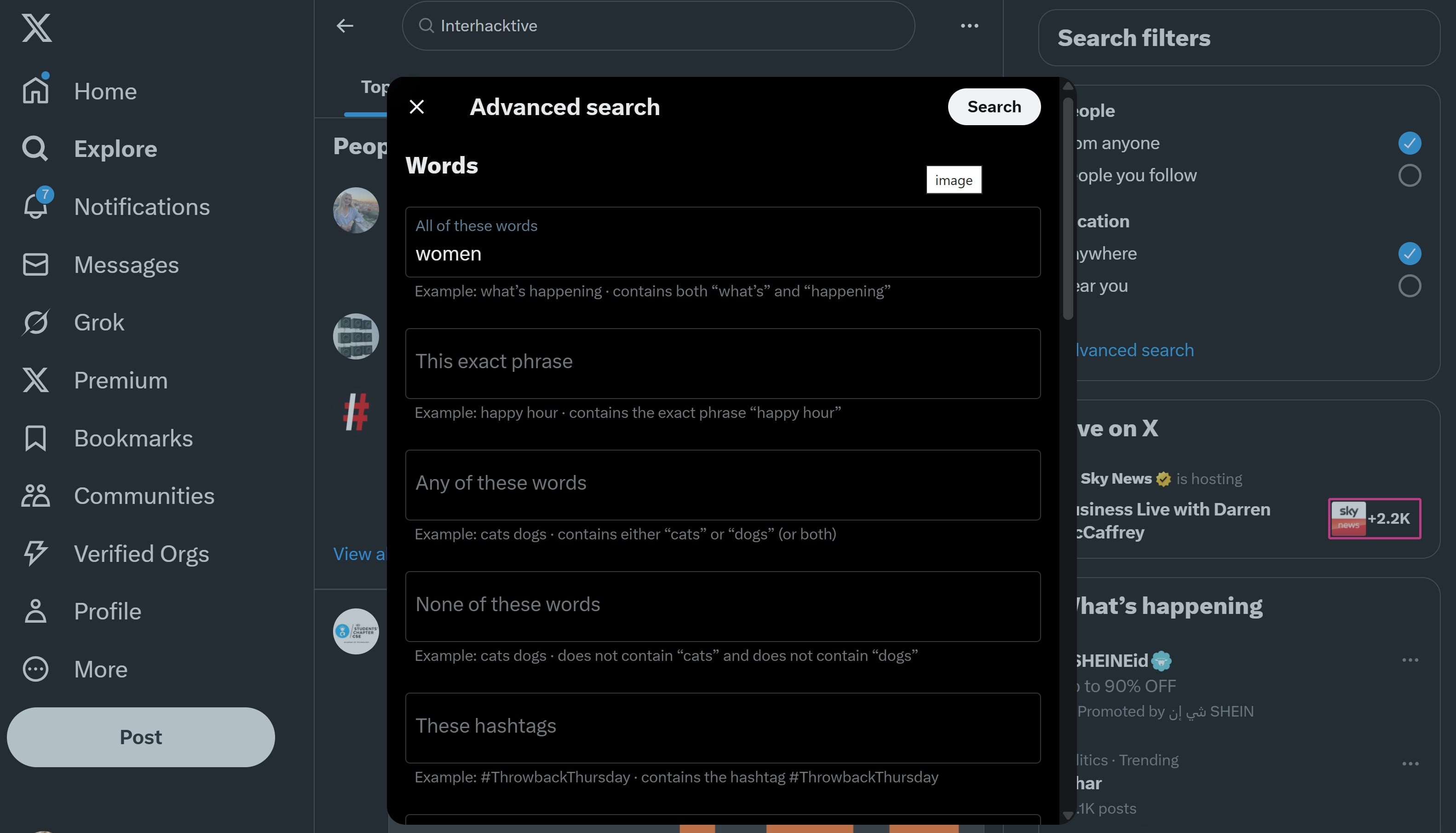
Since X (Twitter) is a source of short, fast news, many reporters are more active on this platform than on LinkedIn.

If you don't want to direct message (DM) any one blogger or journalist right away, you can create a tweet or LinkedIn post to get the message out there to your network.
Check media databases.
Media databases are an invaluable resource for press release outreach. They are a great source of contact information because they contain the email addresses, Twitter handles, and other contact info of influential industry professionals.
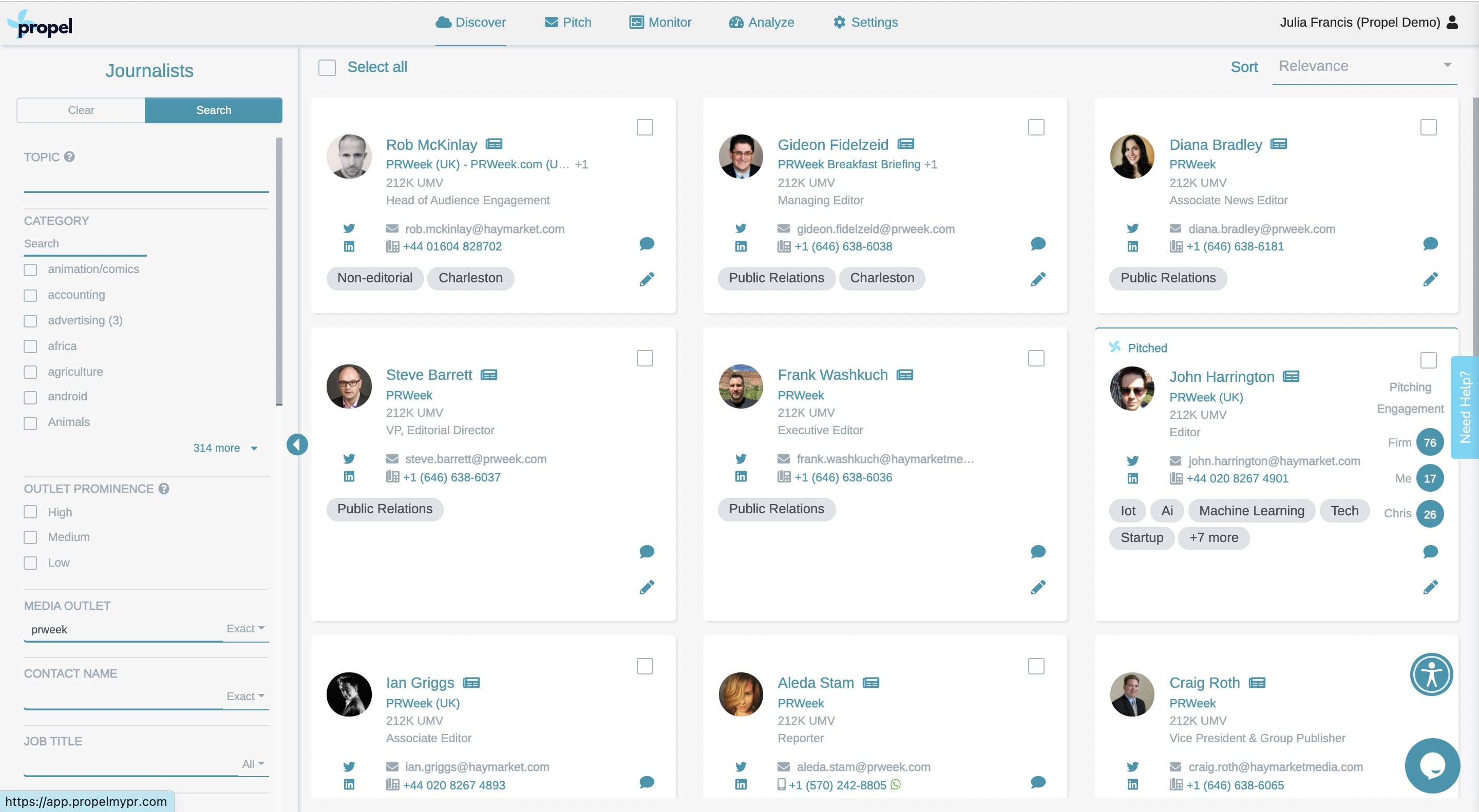
A few popular media databases include Cision PR Newswire, Meltwater Newsdesk, Muck Rack, and PressRush. You can use these sites to search by keywords, company name, and more to build a list of media contacts.
These databases usually cost thousands of dollars, but if you have a tight budget, you can look for cheaper alternatives.
Use an email finder tool.
Depending on the site you primarily plan to find your leads on, you can use email finder tools to help.
Hunter.io is the most popular email search engine tool, and it's free up to a certain number of searches per month. You can also filter your search results by domain, so if you wanted to target only journalists from The Washington Post, for example, you could do that with Hunter.
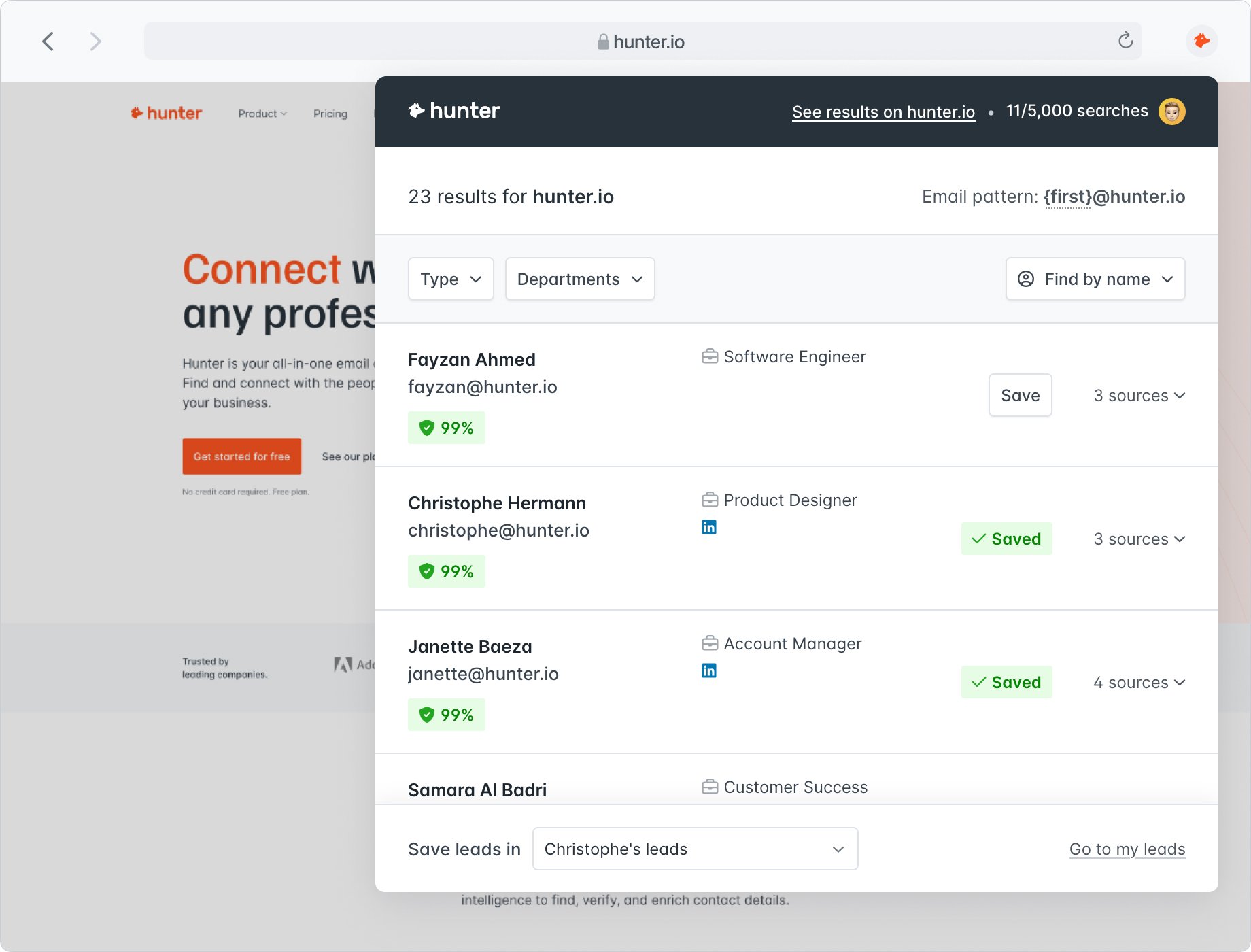
Its Chrome extension can detect email addresses on any website, and you can export your leads to a CSV file for easy importing into your CRM.
Another solid platform for finding emails is Lusha. It's also available as a Chrome extension and you can use it to find the email addresses of individuals on LinkedIn.
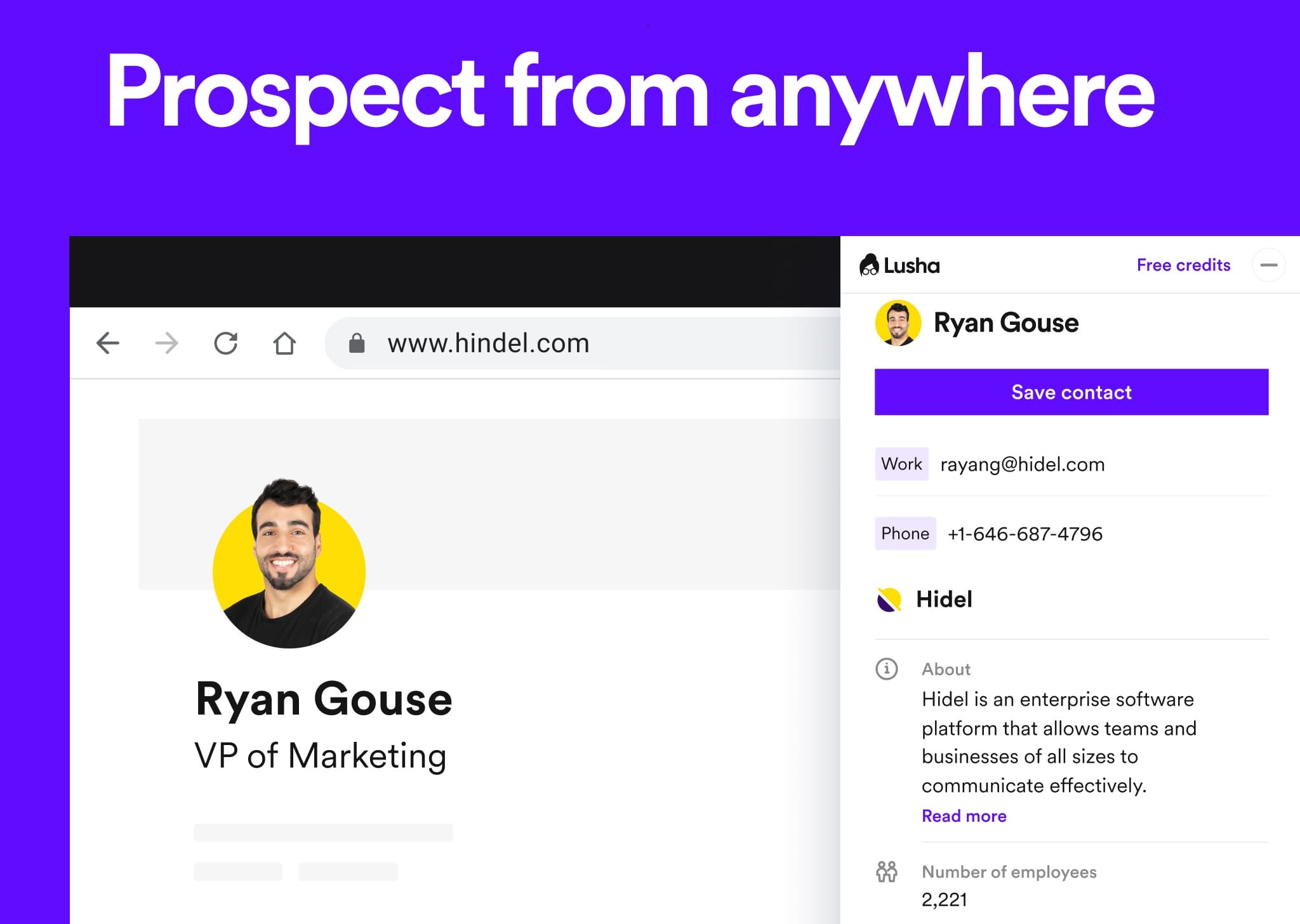
It’s less robust, but it’s also less expensive.
Check media outlets and website directories.
Media outlets and site directories are another great place to start. Take a look at the list of media outlets on their websites, and see how you can get in touch with the right people.
For example, The New York Times and most other large publications have a page called “Contact Us” where you can send a message to the editors.
Keep in mind that there are probably thousands of other publications out there, so you probably won't have much success doing this unless you have someone inside the company who could help you.
Write a catchy email subject line.
47% of email recipients will open your message solely based on its subject line, so if you want to boost your chances of getting noticed, the few words you put there are critical. Anything boring, vague, or overly promotional is a fast track to the trash folder.
Instead, write subject lines that are:
- Clear: What’s the news? Spell it out in plain language.
- Concise: Stick to 8–10 words max.
- Compelling: Focus on the angle that makes it worth covering.
- Newsworthy: Imagine it as a headline — would it fit in a publication?
Avoid anything clickbait-y. This isn't marketing, it’s journalism. Editors don’t want hype. They're looking for relevance.
Notice how every example on the left follows a similar formula:
- Lead with the subject of the article or announcement (e.g., org name or individual title).
- Follow with the specific details of the news or update (e.g., "Raises $5M to Tackle AI Bias in Healthcare").
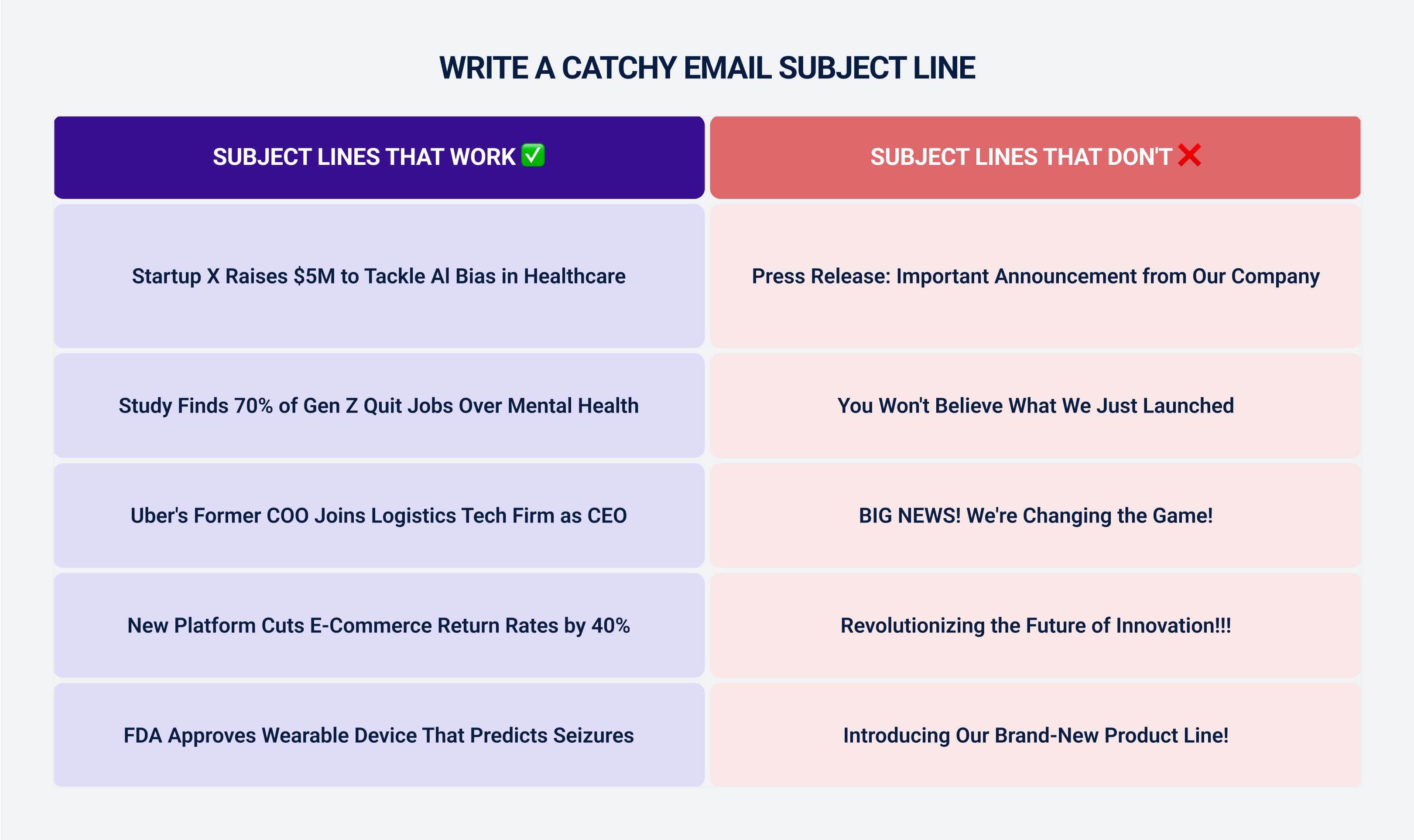
Develop a pitch email that guarantees quality leads.
There's a lot of misinformation about what makes a good cold email. And the fact of the matter is that most people get it wrong.
Here are a few tips to craft a great cold email that will actually convert:
- Keep the body as short as possible. A good rule of thumb is that if it won't fit in a tweet, it's too long.
Be clear and to-the-point. Don't beat around the bush—make sure you get right to the point of why you're emailing them. - Focus on how your story or product benefits the reader. If you focus on yourself, you're much less likely to get a response.
- Personalize as much as possible. Try to find some common ground with the person you're reaching out to. They get hundreds of emails per day from people just like you, so all you have to do is find a way to stand out.
- End with a clear call to action. Tell them exactly what you want them to do and how they can get it done quickly.
For help writing an email, you can use a tool like Lavender. This software comes with a browser extension and a mobile editor that grades your email for clarity and impact.
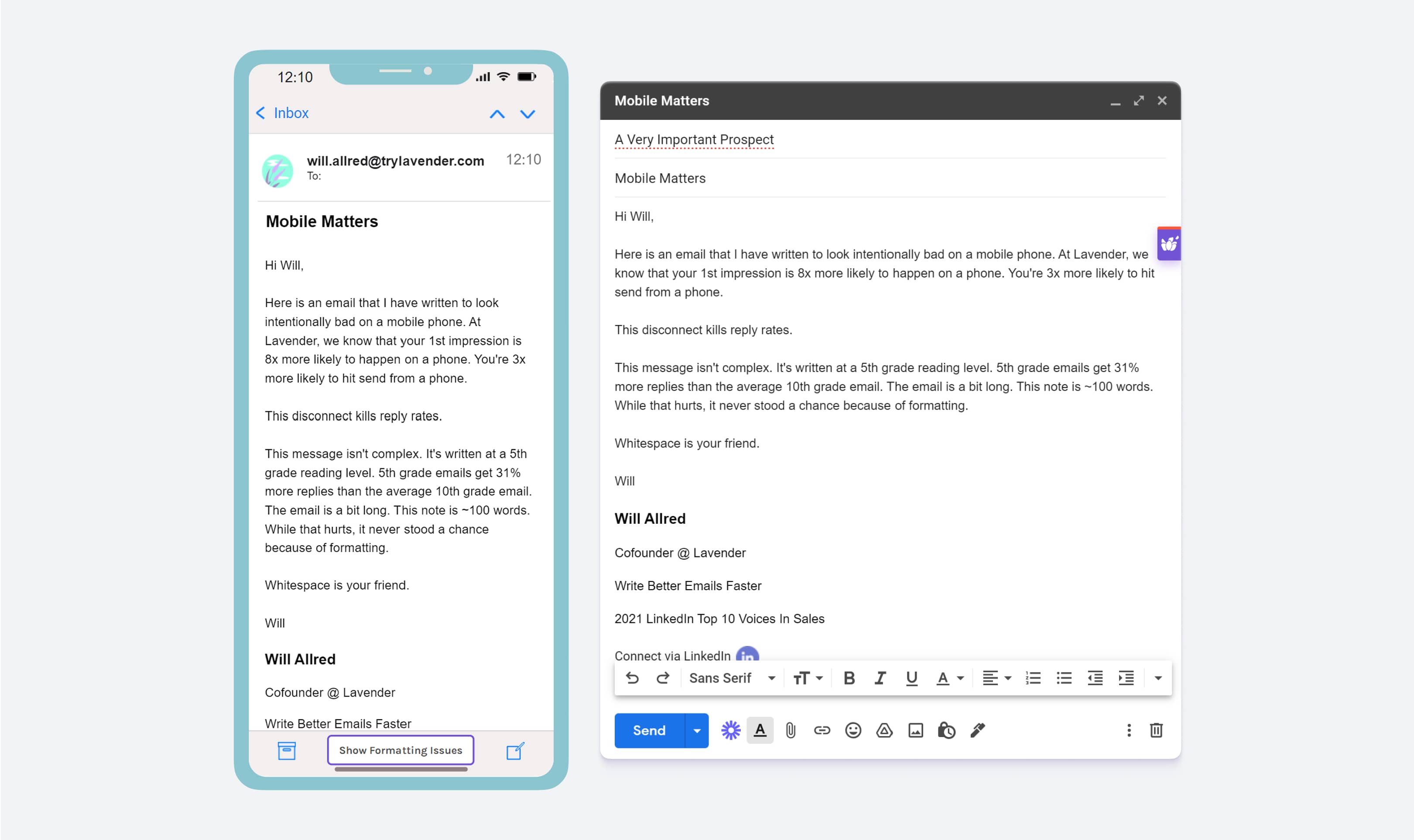
Plus, it offers suggestions for improving your message to get the best response possible.
Prepare your pitch email for sending.
Before you send your pitch email, there are a few criteria that it should meet.
- Send it to the right person. Don't target someone with the title "Head of Content" or "Editor in Chief." These people aren't the ones in charge of reading and approving press releases. Find someone lower on the totem pole who is more likely to respond and either put you in touch with the right person or be the one to make a decision about your release.
- Check for typos and grammar mistakes. In both your press release and your email, make sure you read it over a few times and use spellchecker to ensure that everything is error-free.
- Include contact information. Be sure to include your name, email address, and phone number at the bottom of your pitch so they can get in touch with you if they have questions or need more information. The easiest—and most professional—way to do this is with an email signature.
- Keep formatting simple. Don't use any crazy font or add complicated styles that take away from the message. Stick to basic HTML elements like bold, italics, and underlines.
If should look something like this in the end:
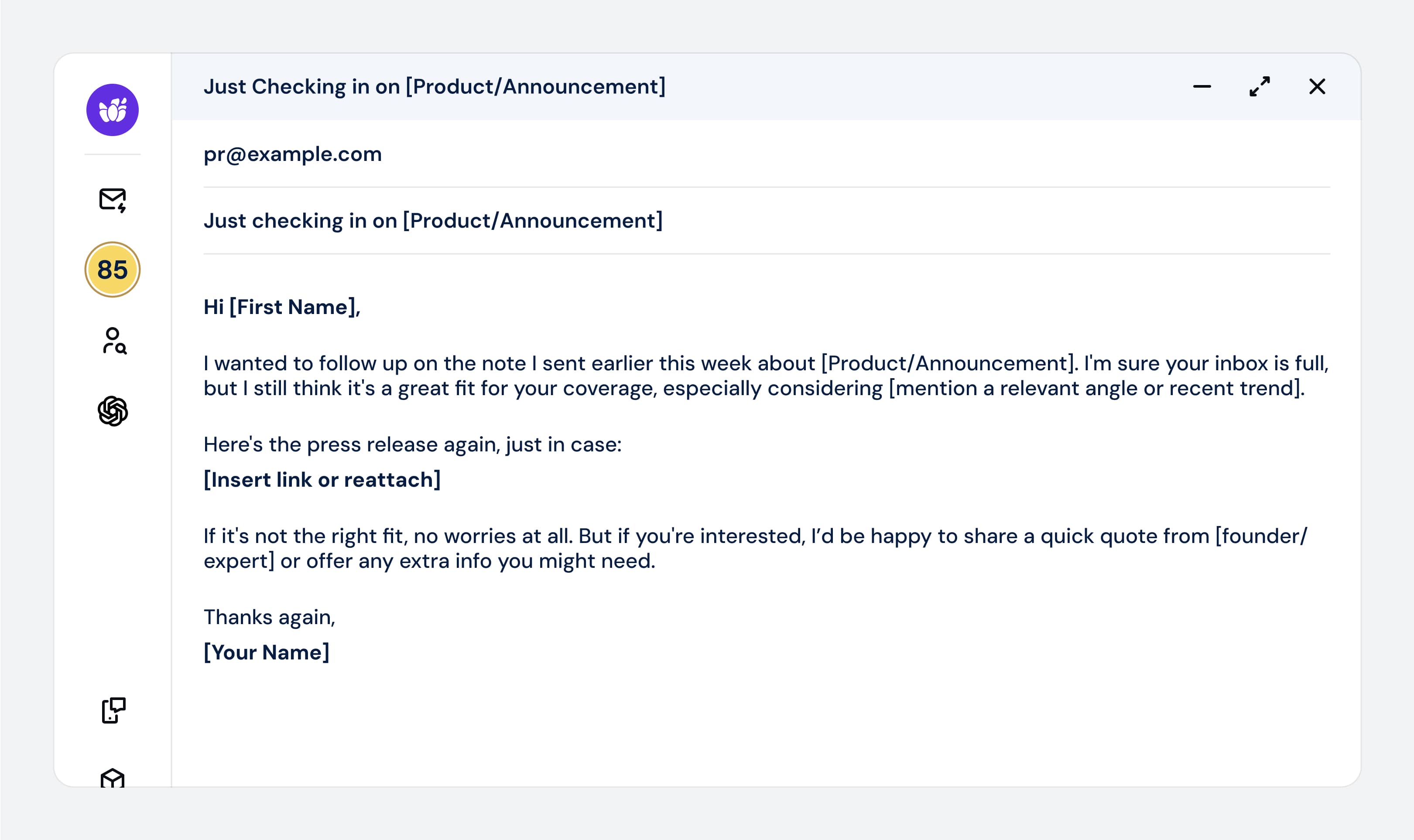
Send your pitch email.
First, make sure to BCC yourself so that you have a record of sending the pitch. This will also give you quick access to the message if it gets lost in someone's inbox.
For press release tracking, you may also want to consider using an email tracker that will let you know when the email was opened and how many times it's been clicked on. This can be invaluable if you're trying to monitor how well your pitch is doing across multiple platforms.
Follow up on your press release.
Following up with your recipient shows how much you care about publishing your press release. It also adds an extra layer of professionalism to your pitch and gives them a chance to ask any questions they may have.
And since the average open rate of an email is only 21.33%, you're missing out on nearly all of your potential responses by not following up.
So how should you follow up?
The best way is to send a brief, polite email reminding them that they still haven't responded and asking if there's anything more you can do to help them make their decision.
This'll show that you are both determined and thoughtful, two qualities that any publisher or journalist is sure to appreciate.
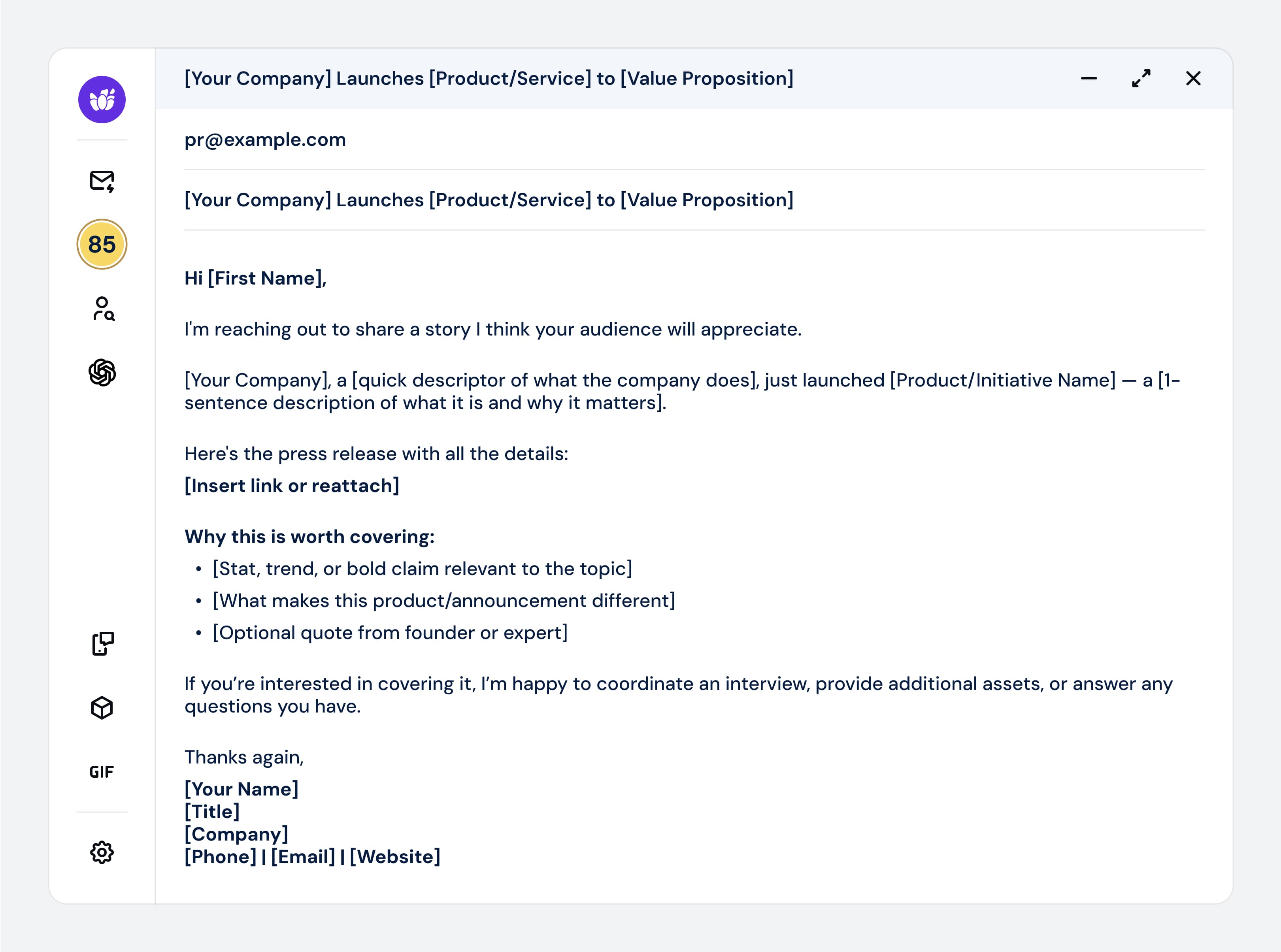
When is the best time to send a press release?
The best time to send a press release is between 10 AM and 2 PM, local time. The actual time you send your press release will differ for global PR initiatives because of time differences, but studies show that open rates start to drop after lunchtime.
To boost open rates on your emails, you can also send your press release emails between :55 and :05 or :25 and :35 time points, as this is when most people are actively checking their email and just getting out of meetings.
Frequently Asked Questions
What is the best format to send a press release?
While the format of a press release can vary depending on the outlet you are sending it to, there are some general best practices that you should follow.
- Make sure to include all of the essential information, such as the who, what, when, where, and why.
- Keep your language clear and concise—remember that you are trying to capture the attention of busy reporters and editors.
- Make your pitch digestible by adding bullet points or using subheadings.
- Cut out any fluff or superfluous information.
- Make sure your email is free of any typos.
While this is the best way to send a press release at the moment, it’s important to stay in tune with current PR trends to ensure the highest probability of success with your campaign.
Can I submit the same press release to different PR websites?
With so many different PR websites out there, it can be difficult to know where to start. The good news is that you can submit the same press release to multiple sites. Just be sure to tailor each submission to the specific site you're submitting to. And remember that your press release should only be posted on one site to avoid duplicate content.
Should I send a press release to a large media list?
Quality over quantity is the key. It's better to build a targeted list of contacts at publications your press release can actually benefit from. If you aren't sure where to start, press release distribution services can help you create targeted lists and submit your press release to the right media outlets.
How far in advance should you distribute a press release?
Two to three weeks in advance is recommended. This gives media outlets sufficient time to write and publish your press release, which allows it to receive maximum visibility.
Who should I send a press release to?
Journalists, editors, and publishers are all excellent contacts to send a press release to. You can also reach out to influencers and bloggers in your industry, as well as any other outlets related to the topic of your press release.
What are the best days to send a press release?
According to Cision, the best days to send a press release are Tuesday, Wednesday, and Thursday. Monday tends to be too busy, while Friday is often overlooked. Usually, Thursday sees the highest open rates.
Should I send a press release in Word or PDF?
Word documents are best for sending press releases, as they are easier to edit. PDFs are static, meaning that they can't be edited. However, you can use PDFs if you are trying to protect the formatting of a press release.

